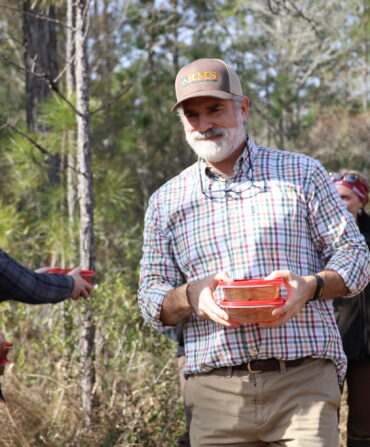Whether you call it Frogmore stew, a Lowcountry boil, or just a plain old seafood feast, cracking into a dish of simmered shrimp or crab, corn, and potatoes is a hot-weather ritual throughout much of the coastal South. “Every summer my family from New Orleans, Birmingham, Chicago, and Savannah would all get a house together at Orange Beach on the Alabama coast and make this meal together,” says Chris Stewart, executive chef of the Glass Onion in Charleston, South Carolina. “We always competed to see who could make the largest pile of empty shrimp shells when all was said and done.”
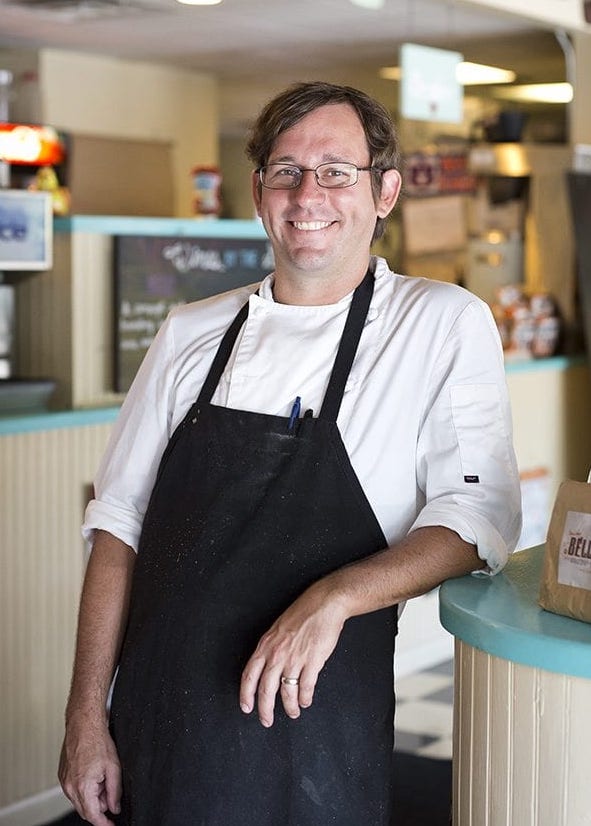
By their flexible nature, seafood boils are forgiving dishes—dump all the ingredients in a pot of boiling seasoned water, and then strain and dump the whole tasty mess out on a big table. Friends and family eat with their hands, dragging shrimp through butter or hot sauce and clinking cold bottles of beer. It’s messy and casual and fun. But to really achieve the carefree vibe, it helps to employ a few tips, tricks, and pointers from the pros. (And fair warning: Some strong—and surprising—opinions follow!
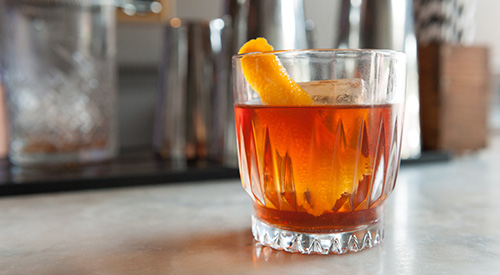
Start with the right tools.
Griffin Bufkin, the co-proprietor of Southern Soul Barbeque on St. Simons Island, Georgia, polled his catering crew’s Rachael Williams and Mark Hanna, who put on Lowcountry boil events all over the South. Their equipment list is simple: “A solid, good-quality propane jet burner and a heavy-duty stainless steel stock pot with a strainer basket are key. And a big paddle.” (For stirring).
“The pot size is the really crucial element in this process,” Stewart says. “Lean on the side of a ‘too big pot’ over a ‘fits just right’ pot, depending on how many people you are serving. When the other ingredients are added in with the water and potatoes, the water temperature will decrease significantly. The trick for combatting this is the larger the pot, the less the disruption to the overall water temperature.”
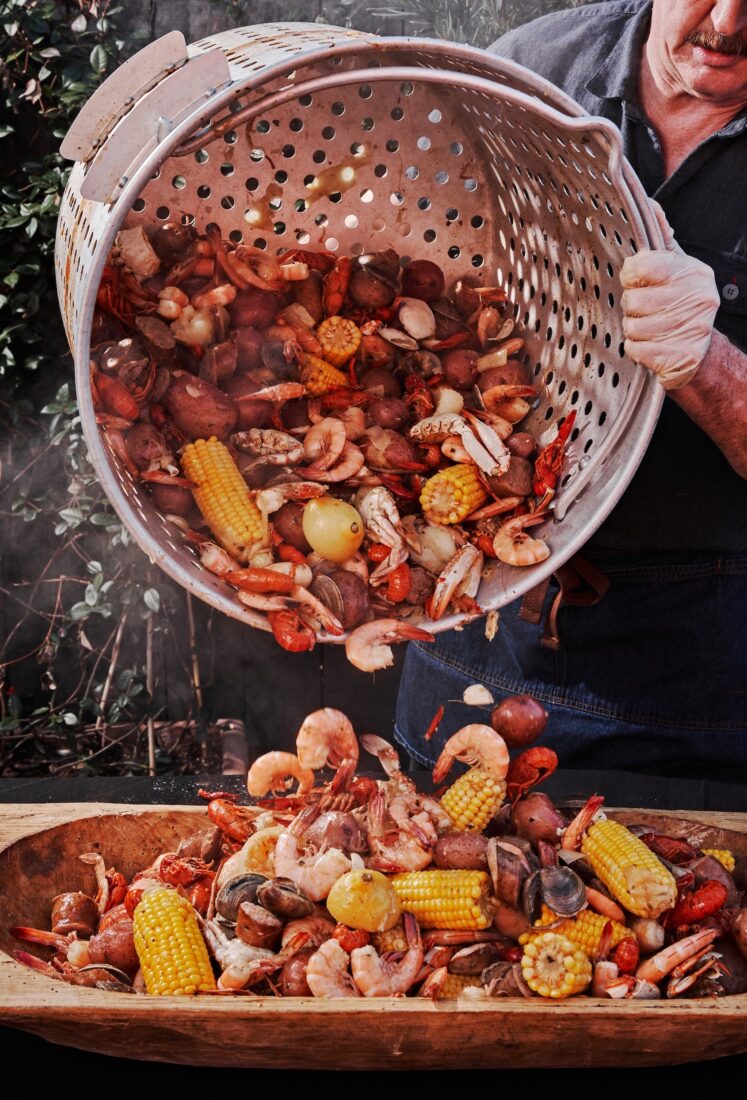
For a smaller indoor boil, a large stock pot works just fine, says Lucas Hanagriff, raw bar manager at Fleet Landing in Charleston, South Carolina. “You can tackle this dish in your own kitchen with a large pot with a lid atop your stove. You do not need the basket but will need a colander to dump the ingredients into, or you will need a slotted spoon to remove the ingredients if you’d like to save the broth.”
Get a flavorful brew boiling.
The classic base is water, brought to a boil, plus a generous pour of a seafood seasoning blend like Old Bay, Zatarain’s, or this delightfully less salty option from Asheville’s Spicewalla. From there, folks get a little creative, adding brightness with vinegar, citrus, or even soda and beer.
“A fun little tradition we will do is get everyone to stand around the pot and crack a beer, then add the first pour into the pot,” Hanna says. A can or two of a light lager can also go right into the pot.
Executive Sous Chef Monique Mickle of the Darling Oyster Bar in Charleston, South Carolina, brings water to a boil with Old Bay, salt, garlic, one can of Miller High Life, halved oranges, lemons, and onions. Another twist for a sweet hit: Sometimes she adds a full-bottle pour of Dr Pepper to the water when the seasonings go in.
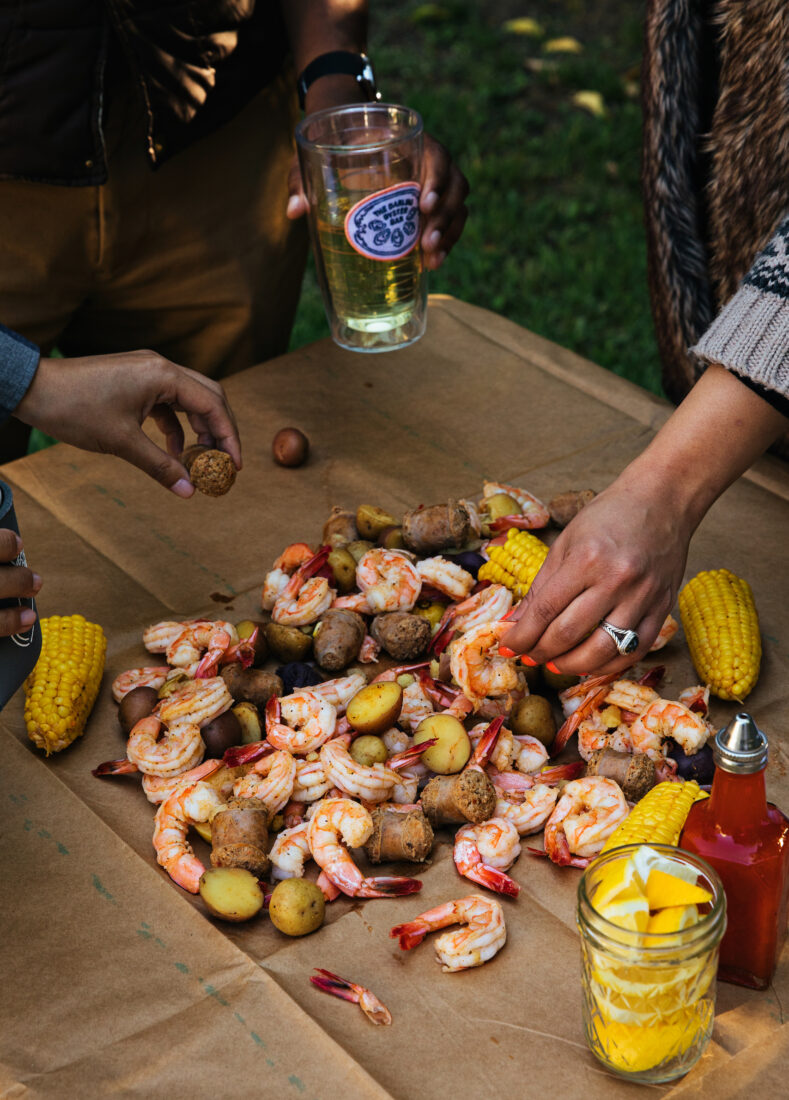
Stewart prefers a big glug of zippy white wine in his richly seasoned simmering liquid: He brings water to a rapid boil with white wine, salt, mustard seed, cayenne, red pepper flakes, coriander seed, black peppercorns, fresh thyme, roughly chopped celery, a quartered onion, one halved lemon, garlic cloves, and bay leaves.
Ann Marshall, co-owner (with her husband, Scott Blackwell) of High Wire Distilling Co. in Charleston, South Carolina, says, “My husband brought a die-hard love of Zatarain’s to our marriage, and there was no turning back for me. Scott’s recipe starts with a roiling boil, adding salt, the Zatarain’s seasoning packet, and a half a lemon. He adds kielbasa pork sausage and a full can of what we call beer-flavored beer (yellow beer). He wants the sausage to really soak up the flavor of that beer, so he lets that be the star of the show for at least fifteen minutes.”
Pretty much everyone agrees—potatoes first.
Most of our experts agreed that potatoes go in next. “After the seasoned water boils, toss in small red potatoes—I prefer handpicking them over bagged ones so they cook evenly,” says Sophina Uong, chef/owner of Mister Mao in New Orleans.
Hold on, stop the presses. Some people FORBID taters!
Marshall and Blackwell have some thoughts on potatoes. “We believe it is a cardinal sin of Lowcountry boil to let a potato join your shrimp in the boil, as starch in the potato degrades the shrimp shell, making them much harder to peel and eat,” Marshall asserts. “We do, however, honor the traditional recipe by serving homemade potato chips alongside the boil. We cut small redskin potatoes into ¼-inch slices, toss them in olive oil, salt, pepper, and a dusting of famed New Orleans chef Paul Prudhomme’s magic seasoning, and roast them on a baking sheet at 450 degrees for about forty minutes.
Add corn, sausage, and perhaps some other fun finger foods.
Shucked corn usually comes next, added to the boil after the potatoes (or not if you’re the Marshall/Blackwell family) have started to soften. Next usually comes sliced smoked sausage (although some folks add sausage to the seasoning water earlier). Then it’s either time for the final step—seafood—or just the midpoint of the full flavor roller coaster of mix-ins.
“The add-ins are where the fun starts and can spark debates at family gatherings,” Uong says. “Some are sacrilegious yet delicious—canned peanuts are my personal favorite! Other options include halved garlic cloves, whole jalapeños, hard-boiled eggs, sausage, pork dumplings, firm tofu, chewy Korean rice cakes, spongy fish balls, mushrooms, and even a touch of curry powder or coconut milk.”
Highlight local shrimp and maybe other seafood.
“When you live in a port city like Charleston, it is a foregone conclusion that you’re buying your shrimp straight from the dock,” Marshall says. “The fact that our Lowcountry boil begins with a ‘quick’ 45-minute catch-up with our friend, Cindy Tarvin, of Tarvin Seafood makes the recipe even sweeter.”
Because shrimp cooks so quickly, it’s usually added at the very end. “Cut off the fire to the pot and add the shell-on shrimp; keep stirring,” Hanna says. “The key is to poach the shrimp so they don’t overcook.”
“The shrimp can be cooked with the heads on or off,” Hanagriff says. “While the heads can add tremendous flavor, they aren’t for everyone. Whether your shrimp are whole or not, we do recommend cooking them with their shells on. The shells can help protect the delicate meat from over cooking.”
Uong has a guide for timing her additions, including some Louisiana crab and crawfish: “Once the potatoes are tender, add crabs and corn for five minutes, crawfish for three minutes, and shrimp last,” she says. “Then turn off the heat and let it all soak for thirty to forty minutes. The soak is key. The acid [from lemons and vinegar in Uong’s version] not only adds flavor but also makes peeling seafood easier.”
Timing is…up for debate.
In his gorgeous new cookbook, How to Cook the Finest Things in the Sea, chef Ari Kolender, a native of the South Carolina Lowcountry who now lives in Southern California, shares a recipe for a seafood boil with an interesting twist on timing—he takes out each ingredient once it’s finished cooking.
“Highly controversial!” he admits. “Corn, potatoes, seafood—they all cook for different amounts of time to be their best. You have to respect the potato as it can easily get sogged out with Old Bay water. The corn, careful not to let the kernels shrivel up and die. This is why I do it all individually with the thought in mind that in my sequence you are flavoring the broth more and more throughout the process. When you are ready to cook the seafood, everything gets lobbed back into the pool.”
Have fun with the pour—and the toppings.
Once you pull the whole thing off the heat and drain out the water (some folks save the liquid as a flavorful cooking broth), pour the whole feast out onto a platter or a table covered in newspaper.
“The dumping of the pot will produce quite a bit of runoff,” Hanagriff says, “so to save your kitchen, this is a great excuse to get out an old plastic or wood table and enjoy the great outdoors.”
Set out ramekins of fun toppings. “I like to dabble in a lot of extra dips and butters on the table for maximum flavor,” Kolender says. Common dips include cocktail sauce, hot sauce, and melted butter.

“For finishing touches, always have ice-cold beer on hand—it’s better for drinking than boiling,” Uong says. “I also like making a chili crisp mayo for shrimp dipping and keeping a crockpot of garlic butter with portion cups for guests. Don’t forget the essentials for the ultimate party: Costco-sized paper towels, bowls of sliced lemons for washing, and plenty of Tupperware” (for taking home leftovers).
Or, if there are any shrimp or potatoes left on the table, Kolender has a creative idea for the next morning, which involves “turning them into a breakfast hash for what are likely four slightly hungover people from the previous day’s festivities.” Find that recipe, Leftover Frogmore Hash, here.
And now for two totally different spins:
Chef and G&G contributor Vivian Howard was busy putting the finishing touches on her new restaurant, Theodosia, on the Outer Banks when we reached out for her seafood boil tips. Her colleague and frequent collaborator Baxter Miller, a North Carolina native and photographer, shared a delightful backstory—and two smart recipe twists:
“Vivian actually has a brilliant cooking method,” Miller explains of a recipe for “Frogmore Steam,” which Howard published in her authoritative cookbook Deep Run Roots. “She uses way less liquid than most, albeit highly seasoned. She starts it on the stove, finishes it in the oven, and tosses it with butter and lemon juice before serving. The flavor is much more concentrated and the shrimp cooked perfectly because they steam slowly instead of stewing too long in too much liquid. My ancestors would hate for me to say it, but the Pork Princess has most of us coastal folk beat on this one because the juice is just so flavorful, and it’s an accessible one-pot meal.”

Baxter continues, “My favorite method I’ve learned on the Outer Banks, though, is Melanie Cahoon’s Porch Party Shrimp. She dots a baking sheet lined with foil with shrimp, lemon rounds, butter pats, and little baby piles of Old Bay and bakes it in the oven for a few minutes. Once the shrimp are pink, the sheet goes from oven to porch beside crusty bread. I have dreams about the resulting butter-juice in the pan, which serves as more of a condiment than a broth. Because it doesn’t have the starches (or cleanup—just roll up the foil and toss) included, it’s a perfect party starter, hover-round-the-table, or happy hour kind of snack.”
One final note…
“Recipe aside, one of the most important accessories to this beautiful tradition is the type of bowl in which you serve your boil,” Marshall says. “Every household in Charleston has (or should have) a dedicated vessel. Ours is a rustic, hand-carved wooden bowl that lives over our cabinets in the winter. Next to a rice spoon or a fish server, this is the quintessential wedding gift for a young couple in Charleston.”
Garden & Gun has affiliate partnerships and may receive a portion of sales when a reader clicks to buy a product. All products are independently selected by the G&G editorial team.






